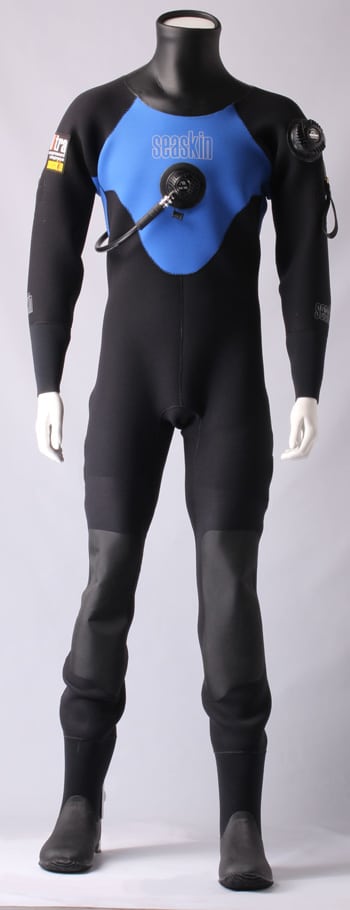Fit on a wetsuit is extremely important. We used to get custom-fitted wetsuits, but those have pretty much gone away with the super-stretch neoprene. We used to specify skin-in, neoprene out for our wetsuit, and used corn starch to get into them. We used to get wetsuits without zippers, a pull-over top with an attached hood, and “Farmer John” bottoms, but I’m not sure whether these are options currently either.
An ill-fitting wetsuit pumps water in and out with each movement of the diver’s arms and legs. This can make even the thickest wetsuit a cold wetsuit.
One option if you already have a wetsuit is to get a hooded vest for wearing under it. Be sure it fits like a glove, though getting into and out of it is somewhat more difficult. But this can be a cost-effective way to make a cooler wetsuit much warmer.
SeaRat
An ill-fitting wetsuit pumps water in and out with each movement of the diver’s arms and legs. This can make even the thickest wetsuit a cold wetsuit.
One option if you already have a wetsuit is to get a hooded vest for wearing under it. Be sure it fits like a glove, though getting into and out of it is somewhat more difficult. But this can be a cost-effective way to make a cooler wetsuit much warmer.
SeaRat




